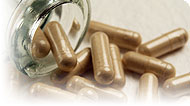health guides
Tylophora

Parts Used & Where Grown
Tylophora is a perennial climbing plant native to the plains, forests, and hills of southern and eastern India. The portions of the plant used medicinally are the leaves and root.1
- Reliable and relatively consistent scientific data showing a substantial health benefit.
- Contradictory, insufficient, or preliminary studies suggesting a health benefit or minimal health benefit.
- For an herb, supported by traditional use but minimal or no scientific evidence. For a supplement, little scientific support.
Our proprietary “Star-Rating” system was developed to help you easily understand the amount of scientific support behind each supplement in relation to a specific health condition. While there is no way to predict whether a vitamin, mineral, or herb will successfully treat or prevent associated health conditions, our unique ratings tell you how well these supplements are understood by the medical community, and whether studies have found them to be effective for other people.
For over a decade, our team has combed through thousands of research articles published in reputable journals. To help you make educated decisions, and to better understand controversial or confusing supplements, our medical experts have digested the science into these three easy-to-follow ratings. We hope this provides you with a helpful resource to make informed decisions towards your health and well-being.
This supplement has been used in connection with the following health conditions:
| Used for | Amount | Why |
|---|---|---|
Asthma | 150 to 400 mg daily of powdered leaf | Tylophora has been shown to benefit people with asthma in a variety of ways, including relieving asthma symptoms, increasing the lungs’ capacity for oxygen, and reducing night-time shortness of breath. |
Diarrhoea | Refer to label instructions | Tylophora has been used traditionally in the Ayurvedic system for diarrhoea due to its anti-inflammatory and antimicrobial actions. |
Hay Fever | Spray a lotion containing 3.7% citronella in a slow-release formula every morning for six days per week | Tylophora contains compounds that have been reported to interfere with the action of mast cells, which contribute to itchy eyes, runny nose, and chest tightness. |
Traditional Use (May Not Be Supported by Scientific Studies)
This plant has been traditionally used as a folk remedy in certain regions of India for the treatment of bronchial asthma, bronchitis, rheumatism, and dermatitis. In the latter half of the 19th century, it was called Indian ipecacuahna, as the roots of the plant have often been employed as an effective substitute for ipecac. The use to induce vomiting led to tylophora’s inclusion in the Bengal Pharmacopoeia of 1884.2
Copyright © 2024 TraceGains, Inc. All rights reserved.
Learn more about TraceGains, the company.
The information presented by TraceGains is for informational purposes only. It is based on scientific studies (human, animal, or in vitro), clinical experience, or traditional usage as cited in each article. The results reported may not necessarily occur in all individuals. Self-treatment is not recommended for life-threatening conditions that require medical treatment under a doctor's care. For many of the conditions discussed, treatment with prescription or over the counter medication is also available. Consult your doctor, practitioner, and/or pharmacist for any health problem and before using any supplements or before making any changes in prescribed medications. Information expires December 2024.


 We are proud to announce that
We are proud to announce that  As the market evolves, customers increasingly request a wider variety of omega-3 options for their lipid...
As the market evolves, customers increasingly request a wider variety of omega-3 options for their lipid...  Maintaining healthy glucose levels is crucial for preventing metabolic conditions like diabetes,...
Maintaining healthy glucose levels is crucial for preventing metabolic conditions like diabetes,...  Looking at formulating a new vitamin blend? Discover
Looking at formulating a new vitamin blend? Discover 







































